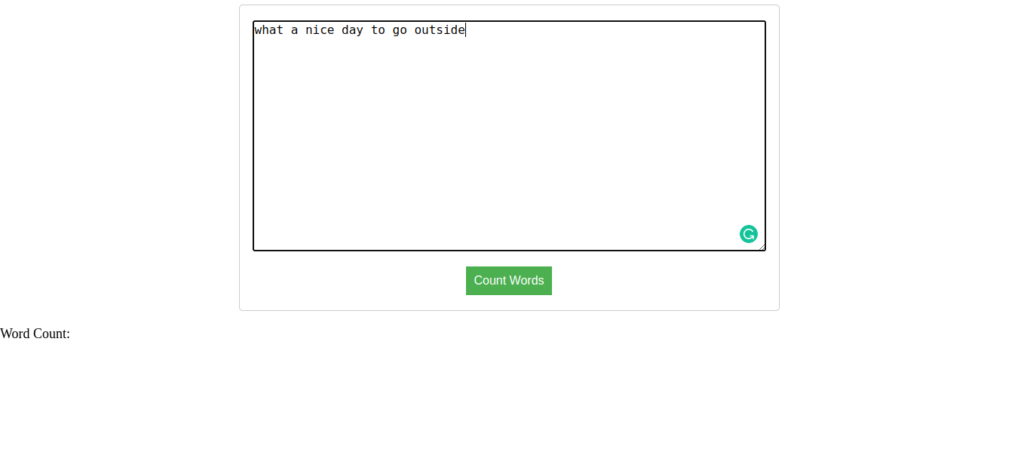In this tutorial, we will be building a Django website that counts words. You first need to have Django installed on your computer, in my case I’ll be using Linux. Here is a simple command to install Django
pip3 install djangoTo start off we will run the following command below which will create a Django project.
django-admin startproject wordcounterNow cd into the project and create an app using the command below
python3 manage.py startapp counterThe above command will create an app called counter. To register the app go to the settings.py file and add the following lines of code
INSTALLED_APPS = [
'django.contrib.admin',
'django.contrib.auth',
'django.contrib.contenttypes',
'django.contrib.sessions',
'django.contrib.messages',
'django.contrib.staticfiles',
'counter',
]Now let’s create a view that will handle the word counting. Go to the views.py file in the counter directory and add the following lines.
from django.shortcuts import render
def word_count(request):
# set the initial word count to 0
word_count = 0
if request.method == 'POST':
text = request.POST['text']
# split the text into words and count the number of words
words = text.split()
word_count = len(words)
return render(request, "counter/index.html", {'word_count': word_count})
else:
return render(request, "counter/index.html")
The above code receives words from a html template that we will create below and it counts the number of words using the python len() function and then renders the number of words to the html template.
In the counter app create a folder called templates and in the templates folder create a folder called counter. Inside the counter folder create a html file called index.html
Here is the html file
<!doctype html>
<html>
<head>
<title>Word Counter</title>
</head>
<body>
<form method="post">
{% csrf_token %}
<textarea name="text"></textarea>
<input type="submit" value="Count Words">
</form>
<p>Word Count: {{ word_count }}</p>
</body>
</html>
The above code creates a form in which we enter the words that want to be counted and then they are submitted to our view in the backend for calculation.
Now let’s create a route for our app. In the counter app, create a file called urls.py and add the following lines of code.
from django.urls import path
from . import views
urlpatterns = [
path('', views.word_count, name='word_count'),
]
Now let’s go back to our root app[wordcounter] and create some routes. In the urls.py file add the following
from django.contrib import admin
from django.urls import path,include
urlpatterns = [
path('admin/', admin.site.urls),
path('',include('counter.urls')),
]
Now our application is almost finished. Open the terminal in the wordcounter directory and run the following command
python3 manage.py runserverThis should start the server on localhost port 8000
Open your browser and type http://127.0.0.1:8000 you should see the app open app as shown below. Enter the words you want and enjoy the results

There you have it. Thanks for reading.













